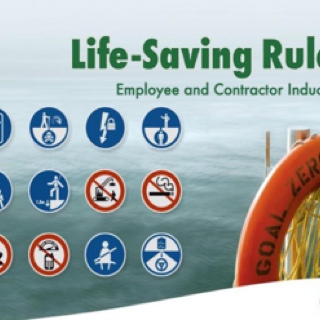Information
-
Document No.
-
Audit Title
-
Client / Site
-
Conducted on
-
Prepared by
-
Location
-
Personnel
Notes for Site Visits conducted as required by Project HSSE Plan Team Leader is responsible for report generation and submission Site Host is given direct feedback of visit outcomes before visiting team leaves the site MFV Leader agrees "SMART" actions with site host Host holds responsibility to follow up on agreed actions. Visit reports are recorded on site visit template only (this record) All completed site visit reports to be sent to the Project HSSE Coordinator for filing in Livelink - clearly handwritten reports are acceptable for submission. Visit record not marked as completed (Green) until visit report is submitted. Next MFV team uses past reports for part of their visit, following up on completions of previous actions.
-
A Subject Matter Expert is appointed and their responsibilities are clearly understood.<br>
-
All lifts are categorized as Simple, Intermediate, Complex or Heavy. Where the lift category is Complex or Heavy, a lift plan is developed and formally approved by a Shell identified SME, PTE or independent third party engineer.
-
The competence of riggers and crane operators, lifting supervisors and signalmen has been checked before they use stationary or mobile hoisting equipment.
-
A geotechnical engineer or competent person has assessed ground conditions before work begins.
-
10 Questions for a Safe Lift are used when preparing for lifting/ hoisting operations.*
-
ALL rigging equipment and gear are inspected prior to each use and colour coding or tagging from the inspection is current.
-
Data Loggers are fitted to all cranes. In the event this is not possible due to the machines configuration, all crane operations must stay within the safe limits as detailed for the particular model and they must be approved by the SME and recorded on the approved lift plan or other lift document that formally records key lifting data (load, lifting radius, boom extension & safety factor).
-
Tag lines, or other means of hands-free practice, are used and are long enough to enable operators to be a safe distance from the load.
-
The “No hands in the line of fire or in harm’s way” protocol is established and being followed.
-
The swing radius of the crane is clearly defined and marked by warning signs and danger tape (red) and controlled by the rigging team.
-
Outriggers must be fully extended, landed on adequate size pads and protected with barricades from surrounding machine and vehicle movements.
-
A person whose sole role is to control and signal the lift, maintains communication (eye contact, hand signals, radio etc) with the Operator(s) at all times. The person in control of the lift is easily identified, for example by wearing a high visibility vest.<br>
-
Audible or visible warnings are used when “flying in loads over work areas or around workers”.
-
Safe limits of approach are followed when working near high voltage lines.
-
Lifting and hosting activities must be suspended during high winds and lightning.














